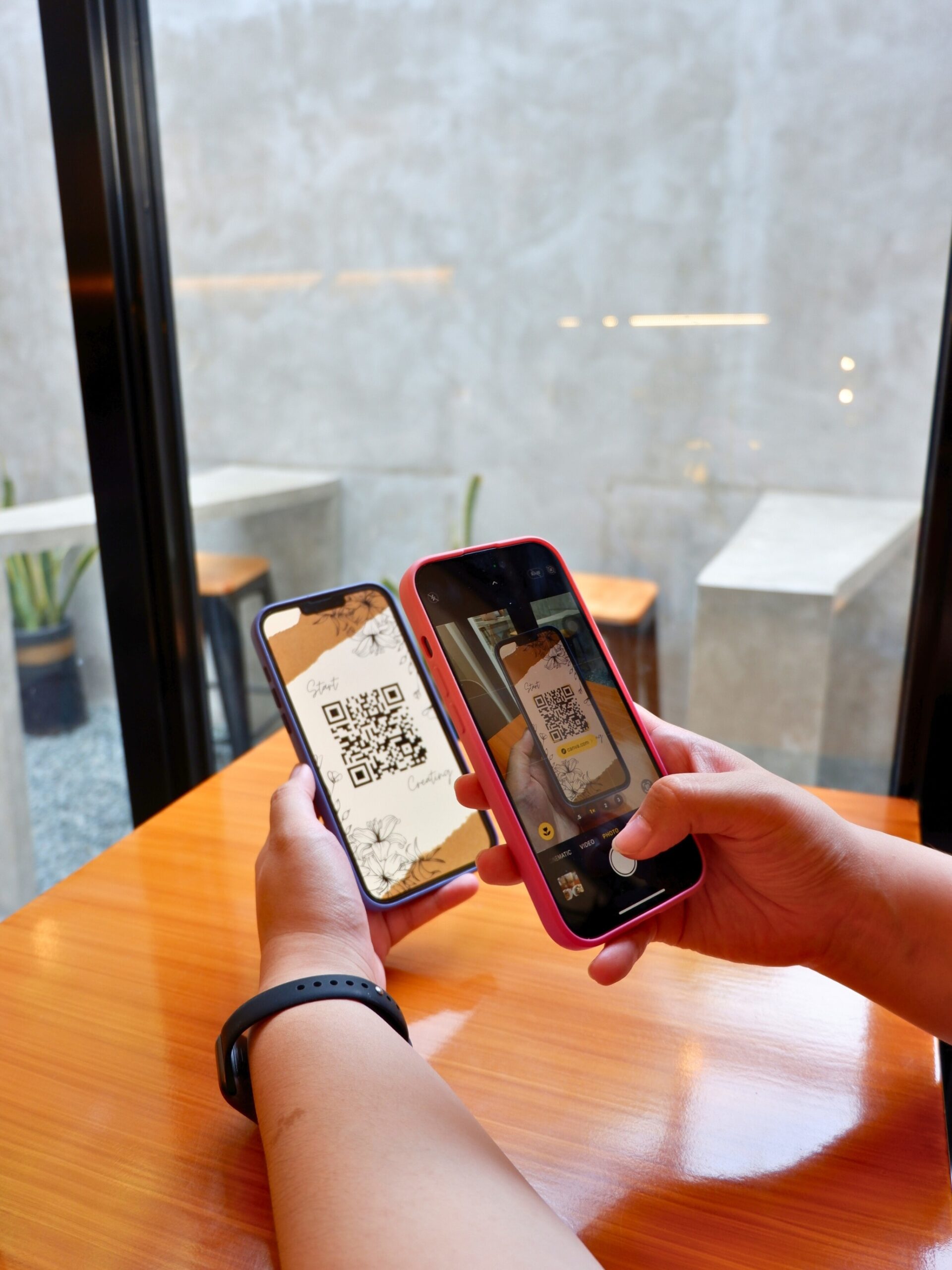
In the realm of digitization, QR codes, or “quick response codes,” stand as enigmatic grids of pixels within a square canvas, holding the potential to convey information upon a mere scan. Originally devised to track vehicle parts in manufacturing, these codes have evolved into ubiquitous tools for opening URLs with a swift scan, sparing us the laborious task of typing intricate web addresses into our browsers.
The Revolution of Contactless Interaction
In the wake of a shifting paradigm accelerated by the Covid-19 pandemic, QR codes have emerged as catalysts for contactless interactions. The conventional exchange of physical menus in restaurants, for instance, has been replaced by the placement of QR codes on tables. Patrons, armed with their smartphones, can effortlessly scan the code, revealing a digital menu and obviating the need for constant disinfection or virus-related apprehensions.
Get savvy on safeguarding your privacy. Subscribe to the ForestVPN Blog Newsletter.
According to a 2020 survey by MobileIron, 72% of users in the U.S. and various European countries have recently scanned a QR code. Despite 48% acknowledging security risks associated with QR codes, their usage persists, marking a testament to the convenience they offer.
Unveiling the QR Code Ecosystem
Who Pioneered the QR Code?
The ingenious QR code system owes its existence to Masahiro Hara, a Japanese engineer, who crafted it in 1994 for Denso Wave. Originally intended for automotive tracking, inspired by the “Go Board” game, the QR code surpassed expectations, permeating beyond the automotive industry.
How Do Codes Function?
Much akin to barcodes, QR codes store information as pixelated patterns in a square grid. The scanning process, a matter of seconds, can open links, add contacts, send messages, or initiate calls.
The Anatomy
- Quiet Zone: This blank area aids scanning devices in differentiation.
- Finder Patterns: Identical squares in corners assist device recognition and orientation.
- Alignment Pattern: Compensates for image distortions, crucial for larger codes.
- Timing Pattern: Vertical and horizontal lines connecting finder patterns determine data matrix size.
- Version Information: Specifies QR code version, with over 40 variations.
- Data Cells: The main section with black and white modules forming the QR code.
Modes of Input in QR Codes
Encode text in four modes: numeric, alphanumeric, byte, and Kanji. Each mode optimizes bit-string generation for its data type.
- Numeric Mode: Encodes decimal digits 0 through 9.
- Alphanumeric Mode: Includes decimal digits, uppercase letters, and symbols.
- Byte Mode: Incorporates mode and character count indicators, along with raw bytes.
- Kanji Mode: Utilized for double-byte characters in the Shift JIS character set, ideal for encoding Japanese characters.
Static vs. Dynamic QR Codes
Static codes lead to unalterable destinations, requiring code reprinting for changes. Dynamic codes, however, facilitate destination alteration, often pointing to reconfigurable shortened URLs.
Unmasking the QR Code Tapestry
Common QR Code Types
- URL QR Code: Converts a website into a QR code, static or dynamic.
- vCard QR Code: Dynamic code on business cards, offering additional client information.
- File QR Code: Dynamic code for file conversion (PDF, PNG, JPEG, MP4).
- Social Media QR Codes: Static or dynamic, grouping profiles or displaying individually.
- H5 Editor QR Code: Dynamic code resembling a webpage, bypassing domain hosting.
- Wi-Fi QR Code: Static code facilitating instant Wi-Fi network connection.
- App Store QR Code: Dynamic code leading to app download screens.
- Multi-URL QR Code: Dynamic code showing varied information based on factors like location or time.
- MP3 QR Code: Dynamic code for promoting music or podcasts.
- Email QR Code: Dynamic code expediting email composition.
- Text QR Code: Static code displaying simple text without internet reliance.
Navigating the QR Code Universe
Scanning QR Codes with Your Phone
The process varies for iOS and Android:
iOS:
- Open Camera.
- Point at QR code.
- Follow instructions.
Android:
- Open Camera.
- Point at QR code.
- Follow instructions in the appearing banner.
Generating QR Codes
Two primary methods:
QR Code Generators:
- Visit a QR code generator website.
- Choose content for conversion.
- Download generated QR code.
Chrome Mobile App:
- Open Chrome.
- Tap three-dot icon > Share.
- Tap QR Code.
- Tap Download.
QR Codes in Everyday Life
QR codes seamlessly integrate into daily routines, revolutionizing various aspects:
- For Travel: Simplifying hotel check-ins and providing tourists with information.
- For Covid-19: Deployed in contact tracing apps and vaccination record storage.
- For Payments: Streamlining transactions without physical cards or cash.
- For Marketing: Offering interactive product packaging, tutorials, and subscription links.
- For Social Media: Consolidating or individually showcasing profiles for effortless following.
Privacy, Risks, and Protection
Data Collection
Scanning a QR code may transmit basic information like time, location, and device OS. Apps used for scanning can collect more personal data, emphasizing the need for cautious scrutiny of app permissions and data-sharing practices.
Security Risks
QR codes pose security risks, with malicious URLs or phishing sites potentially embedded. Vigilance, regular device updates, and discernment in scanning unfamiliar codes are paramount.
Safety Tips
- Exercise Caution: Avoid scanning unknown QR codes.
- Keep Devices Updated: Regular updates mitigate malware risks.
- Stay Prudent: Be wary of too-good-to-be-true offers, as hackers exploit human vulnerabilities.
Exercise caution and remain vigilant. Should you encounter a contest promising free money that seems implausible, it likely is. Refrain from scanning the associated QR code, as hackers exploit human vulnerability and recklessness.

